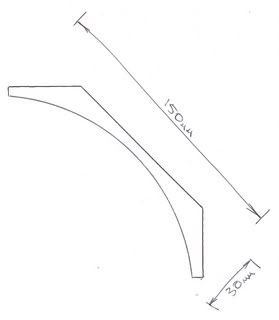SlimShavings":2phlu3ow said:
Knowing that us 'Muricans are a little scary to be around, what with Dado's and all
And just what makes you think that trenching heads aren't used in trade shops over here? The difference is that they're more commonly seen on radial arm saws - where they can be relatively easily guarded, unlike using them on a table saw where it's a much more difficult proposition. Anyway, you "scary" Americans are all now running for riving knives on your table saws these days - about 50 years after we got them here..... Maybe one day you'll also learn about short rip fences and brakes :roll:
SlimShavings":2phlu3ow said:
You can make that on a table saw easily and safely.
Alright, so we'll agree to disagree on that one.
Quite apart from the fact that many home shops over here won't actually accommodate a 16ft diagonal across the table saw (to make an 8ft length), the biggest problem I can see with the table saw approach (from a trades perspective) is that it requires an inordinate amount of clean-up time. In other words I was fool enough to try this technique many years ago and was left singularly unimpressed by the amount clean-up time it required to do 10 metres of oak cornice moulding for a kitchen (and the resulting blisters on my thumbs). As an amateur you may have the time to spend your time cleaning up the mess - in the trades we just don't. And every time you feed a length of timber across the saw to shave off another 2mm it's just more time wasted - one reason why the trades prefer spindle moulders to router tables (one cut as opposed to many). But the biggest downer is that putting a circular saw under side pressure like this will result in some of "springing" of the blade (i.e. sideways deflection) meaning a very coarse finish indeed.
And as a final thought circular saw blades are tensioned to withstand pressure in a straight line cut with minimal flexing - I was always under the impression that if you put a circular saw blade under side pressure you could potentially destroy it's tension. In other words forever after it may not run true, which surely makes a mockery of setting up a table saw accurately in the first place.
Scrit






